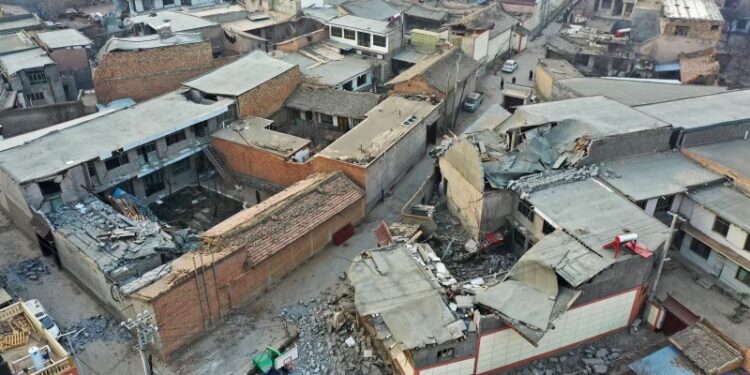On the night of December 18, a magnitude-6.2 earthquake struck the mountainous border regions between the provinces of Qinghai and Gansu in northwest China. Rescue operations continued into the morning amidst sub-zero temperatures.
The earthquake occurred during a severe cold wave gripping the northern part of the country, with temperatures dropping below minus 15 degrees Celsius. Throughout the night and morning, dozens of aftershocks, some reaching 4.0 magnitude, were recorded. Local committees set up safety points in streets and squares after the quake, with residents engaging in exercises to stay warm amid freezing temperatures.
The 6.2-magnitude quake has resulted in over a hundred fatalities and around 500 injuries, with the toll expected to rise. The earthquake and subsequent aftershocks damaged buildings, roads, and hydraulic structures in the mountains, marking the deadliest seismic event in the region since the 2010 Yushu earthquake in Qinghai province.
The Chinese military mobilized swiftly, with troops on-site at 4 a.m., searching for survivors, clearing blocked roads, and restoring electrical supply. Thousands of homes have collapsed, and rescuers are meticulously searching house by house to ensure no one is trapped.
The Chinese President issued instructions on Tuesday, demanding maximum mobilization of rescue teams and the swift resettlement of disaster victims. Over 1,440 firefighters, 1,600 reinforcements, and more than 300 soldiers from the People’s Liberation Army are involved. The country is sending medical teams, ambulances, and an initial batch of supplies, including blankets, foldable beds, tents, and stoves. The Chinese government has allocated $28 million for rescue and search operations.
Chen Xuan, a first-year student at Lanzhou Agricultural University in Gansu’s capital, recounted the moment of the quake: “It was around midnight, and we were all getting ready to sleep when suddenly I felt the bed shaking.” Now, the priority is locating all missing persons and ensuring their safety, followed by assessing human and material losses to provide a comprehensive response for residents who have lost everything.










